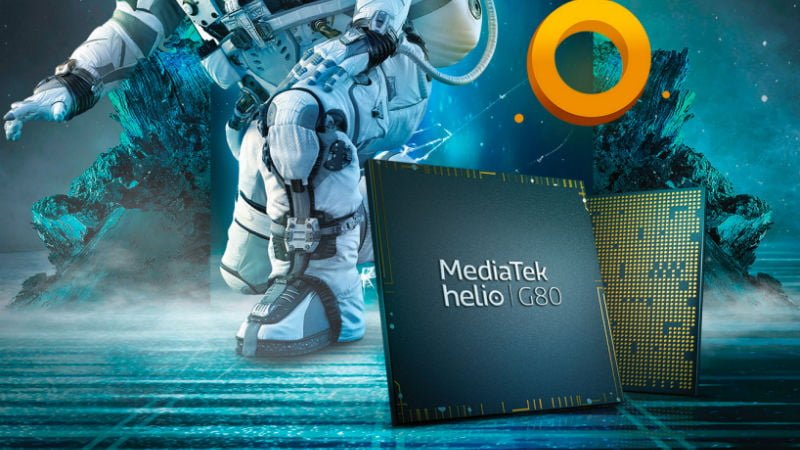MediaTek Helio G80: Features Detailed The MediaTek Helio G80 is designed using a 12nm fabrication process. The octa-core CPU incorporates two powerful ARM Cortex-A75 cores clocked at 2.0 GHz and six ARM Cortex-A55 cores clocked at 1.8GHz. The chipset is paired with Mali-G52 MC2 GPU and features speeds up to 950MHz. The Helio G80 supports up to 8GB of LPDDR4X RAM clocked at 1800MHz. Unfortunately, it doesn’t support Universal Flash Storage (UFS) and instead sticks with the outdated eMMC 5.1 storage. In terms of camera, MediaTek Helio G80 can handle 25MP single camera or dual 16MP camera setup at 30 frames per second. There is also support for a 48MP single camera, but only at 17fps. In terms of video recording, it can handle Full HD+ videos at 60fps. Although the Helio G80 chipset lacks a dedicated APU and AI engine, the chipset will support AI Face ID, AI Smart Photo Album, single or dual camera bokeh effect. Other camera features include hardware warping engine (EIS), rolling shutter compensation (RSC) engine and multiple-frame noise reduction. In terms of the display, the Helio G80 chipset supports Full HD+ resolution with a max display resolution of 2520 x 1080 pixels. For connectivity, the chipset comes dual 4GVoLTE, WiFi 802.11ac, Bluetooth 5.0, GPS + GLONASS, BeiDuo and Galileo. And for charging, the G80 comes with Pump Express technology, though the company hasn’t revealed the charging wattage yet. MediaTek’s Helio G80 is aimed at entry and mid-range smartphones. Xiaomi may launch the Redmi 9 with Helio G80 chipset later this month.
